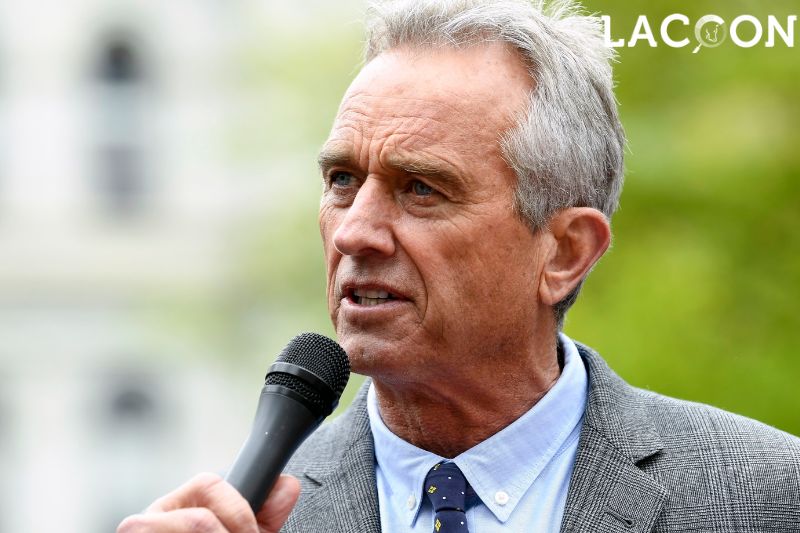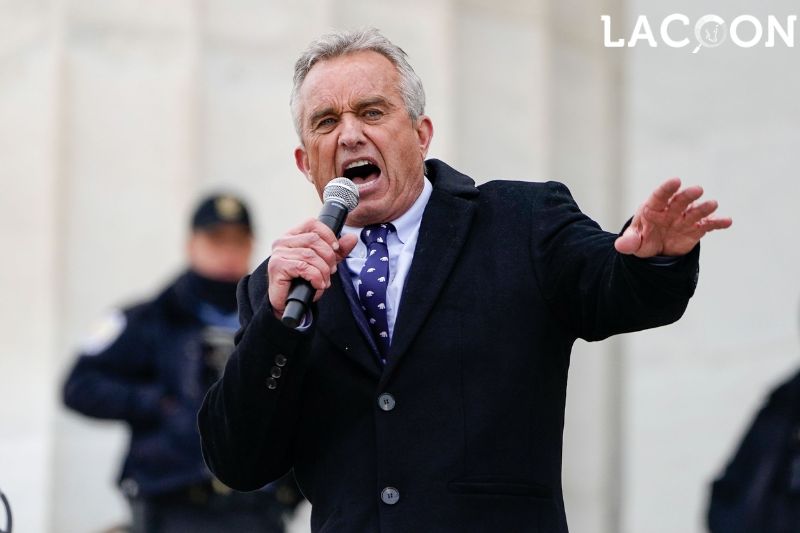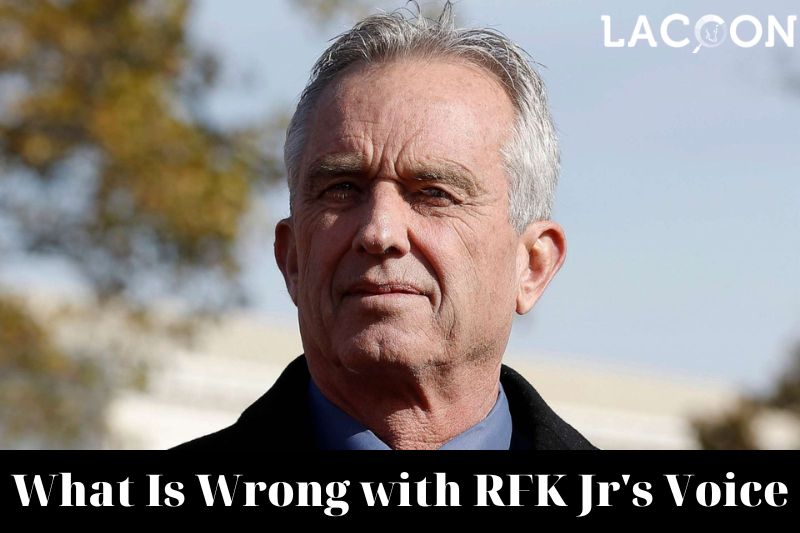Robert F. Kennedy Jr., a renowned environmental attorney, activist, and public figure, has recently gained attention for his role in leading the Worldwide Walkout against COVID-19 vaccine mandates.
As he continues to make headlines and deliver impassioned speeches, many viewers find themselves intrigued by the unique, strained quality of his voice.
In this article, Lacoon will aim to shed light on the lesser-known neurological disorder responsible for Kennedy’s vocal challenges – spasmodic dysphonia – while exploring its impact on his life, work, and the broader cultural landscape.
What is Spasmodic Dysphonia?

Spasmodic dysphonia is a neurological disorder that affects the muscles in the voice box or larynx. When a person speaks, air from the lungs is pushed between the two vocal folds, creating vibrations and sound.
In individuals with spasmodic dysphonia, the muscles within the vocal folds spasm involuntarily, interfering with these vibrations.
This causes the voice to sound strained, shaky, or broken. Depending on the individual, the issue may cause them to pause every few sentences or have trouble pronouncing every syllable.
The Beginning of Kennedy’s Condition

Kennedy first revealed his battle with spasmodic dysphonia during a 2007 interview with Oprah Winfrey. He shared that the condition began in 2001 when he was 47 years old and has lived with it for over two decades.
Kennedy’s symptoms were initially mild, manifesting as a slight tremble in his voice.
Despite this, he continued to make public appearances and received numerous letters of support from people inspired by his willingness to discuss his condition openly.
Although spasmodic dysphonia does not cause physical pain, Kennedy has expressed that speaking requires greater effort.
He was assured at the time that his illness would not worsen, but he has noticed that his voice has become increasingly hoarse as the years have passed.
A 2004 appearance on C-SPAN’s Washington Journal demonstrates the mild nature of his symptoms in the disorder’s early stages.
Treatment and Management
One common treatment for spasmodic dysphonia is the administration of Botox injections into the voice box muscles.
While this method can provide temporary relief, symptoms often return within four months, necessitating ongoing treatment. It is unclear whether Kennedy pursued this course of action to manage his condition.
Spasmodic Dysphonia’s Cultural Impact

In 2019, actress Lupita Nyong’o revealed that her character Red’s voice in Jordan Peele’s horror film “Us” was inspired by spasmodic dysphonia.
Nyong’o cited Kennedy as an influence after hearing him speak at an event, stating, “His voice, and the condition he has, became the catalyst in my creative process.” She studied the condition alongside doctors and dialect coaches to prepare for the role.
Nyong’o later issued an apology for any offense caused by her portrayal, as some viewers found her use of the disorder to voice an evil character hurtful.
She explained, “I crafted Red with love and care. So as much as it is in a genre-specific world, I really wanted to ground her in something that felt real. And so for all that, I apologize to anyone I may have offended.”
Conclusion
Robert F. Kennedy Jr.’s battle with spasmodic dysphonia undoubtedly shaped his public image. Still, it has not deterred him from advocating for his beliefs and championing the causes that he is passionate about.
His openness about his condition has helped raise awareness of spasmodic dysphonia and inspired others struggling with similar challenges. His increasingly hoarse voice is evidence of his tireless dedication to his craft over the years.
Although Kennedy’s condition has sparked some controversy, as seen with Lupita Nyong’o’s character in “Us,” it has also provided an opportunity for public education about this rare neurological disorder.
By understanding the nature of spasmodic dysphonia and its impact on those suffering, society can better empathize with and support individuals like Kennedy.





